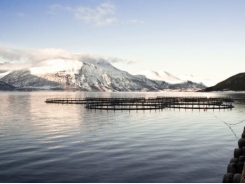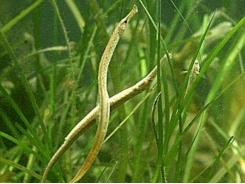Fish trimmings feed promising for Australian prawn farm

A high-protein feed made from salmon and tuna trimmings has shown promise in a three-year trial at a Queensland-based prawn farm, its manager says.
The ‘No Catch’ prawn feed was co-developed by Australian Prawn Farms and local feed supplier Ridley Aquafeeds and is now being used across 75% of the black tiger prawn farm.
Matt West, general manager of Australian Prawn Farms, said trial results had proved promising so far.
“The first year we trialed it, we did it on a very low scale just to see how the prawns would respond to it, and they did really well but we didn’t have the replication there,” he told FeedNavigator.com.
Weekly growth rates maintained
West said the decision to trial the feed across a majority of the farm this year would provide enough replicates to do a full data analysis on the results.
“The return on investment will be the value out of the pond – it’s as simple as that. There’s a lot to that – with regards to survival and growth rates and stocking levels and what progeny they come from – there’s a fair bit of analysis to do,” he said.
West said the diet in the ‘no-catch’ feed had been very closely matched to the farm’s regular feed and weekly growth rates had been maintained as a result.
“Last year we found that that was exactly the case, the prawns grown on the two diets grew exactly the same.”
‘We are trying to protect the farm’
Asked why Australian Prawn Farms had committed to such a large-scale trial on the trimmings feed, West said it stretched beyond the obvious sustainability aspect.
“…It was that, but it was also coupled with trying to protect the farm from any rising fishmeal prices due to this demand that’s out there,” he said.
Using the example of anchovies caught off the Peruvian coast, he explained how vulnerable fishmeal supplies could potentially be, particularly with any regulatory changes.
“If the government over there decides they’re going to put a big stop on the amount of fishmeal that’s being caught, that obviously drives world fish prices through the roof. So again, it was as much about buffering this company with regards to that as it was finding another source.”
Time reduces risk
West said it had been important to gradually upscale the trial because of the level of risk involved when introducing a new feed.
“It’s our single biggest cost. So the more efficient we can get these things going, the better off we are as a business model. But there’s a lot to it. Changing a diet is a fairly risky situation.”
However, he said the farm had intensive controls and monitoring of ponds to ensure ideal living conditions were maintained for the prawns.
“We know the ranges that these animals like living in, and when we analyze the data at the end of the year we’ll find like-for-like ponds across the farm and that’s what we compare with. That’s why we’ve got so many going at the moment - it gives us the ability to have that replication so we can come up with a scientifically sound decision based on an environment that is uncontrollable.”
Control feed next year
West said results were promising enough to potentially use the no-catch feed as a control feed across the farm next year. However, he added that it would not be rolled out across the entire farm.
“We will never have just one feed type on the farm. Again, feed is our biggest cost so we’ll forever be looking for the next feed type, the next frontier in feeds.”
Related news
Tools

Phối trộn thức ăn chăn nuôi

Pha dung dịch thủy canh

Định mức cho tôm ăn

Phối trộn phân bón NPK

Xác định tỷ lệ tôm sống

Chuyển đổi đơn vị phân bón

Xác định công suất sục khí

Chuyển đổi đơn vị tôm

Tính diện tích nhà kính

Tính thể tích ao




 How healthy is farmed salmon?
How healthy is farmed salmon?  A cold cure for sick fish
A cold cure for sick fish